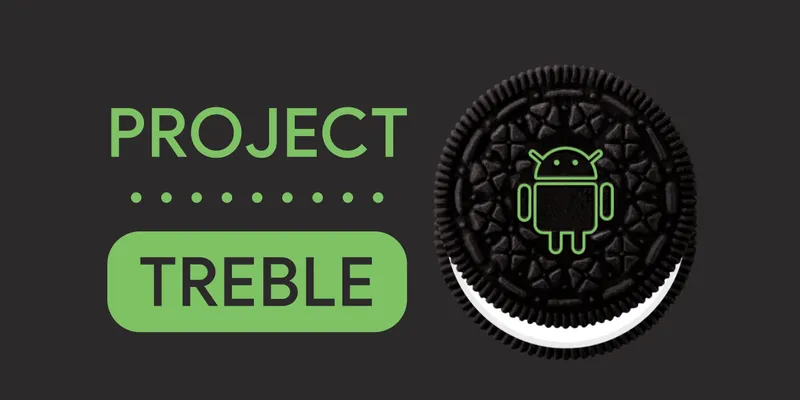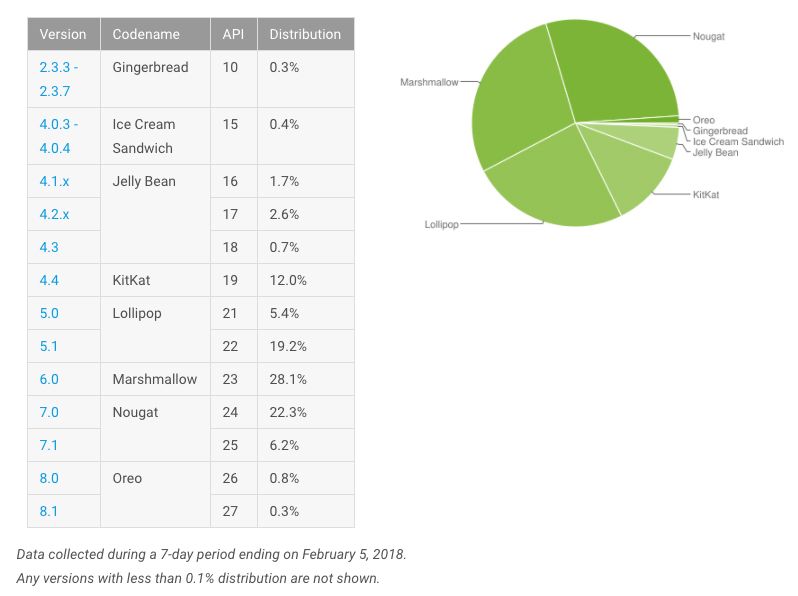PROJECT TREBLE: WHAT YOU NEED TO KNOW

If you are a smart phone user, then there is a high chance that you are using an Android device. Android is open source, fast and wonderful. But it has its limitations just as anything.
“Why is my phone not running the latest android?”
“When will I get the latest the update?”
The most common complaint about Android updates is that they are very slow to release. Consumers have been complaining about this problem to OEMs and Google for years. The situation finally looks set to change with the arrival of Project Treble.
Every year, Google upgrades it’s Android OS. The new update comes with new features some of which improve the overall look and feel of the device and some of which are aimed at improving the performance of the device.
But the question is out of the billions of devices which run on Android OS, how many devices are able to get the taste of these new features. If we look at the statistics, then only a paltry amount of devices run on the latest iteration – Android Oreo (8.x)

WHY THE NEED FOR PROJECT TREBLE? HOW IT IS GOING TO BENEFIT ANDROID USERS?
Fragmentation. While iPhones receive major OS updates for three to four years, the high-end flagship Android smartphones are lucky to receive two (in rare cases, three), and lower-cost models may never see an upgrade at all. Missing out on the latest features is unfortunate, but it’s the lack of security and increasing vulnerability of these devices that are the real worry. Not just for users, but for Google also.
Project Treble is Google’s answer to address this problem. Starting with Android O, Project Treble represents a significant re-architecture of Android OS. Project Treble is the biggest improvement to Android O, and it works behind the scene.
The aim of Project Treble is to make the release of Android system updates much faster and seamless to the device makers, who can then push updates to users at a much faster rate. So it is Google’s answer to that long and frustrating process of pushing Android updates to the user smartphone.
Until now, there was no vendor partition in the Android Source, which means that manufacturers need to edit a lot of code (especially if they run on a custom skin such as Samsung NatureUX, HTC Sense etc) to update their device to the latest version of Android. But Project Treble introduced a new vendor partition from the core Android OS framework.
In short, Project Treble separates Android OS code from a device’s hardware code.

For example, let us consider Samsung. Samsung uses Experience UX on its current generation smartphones, which is a heavily skinned user interface built on top of AOSP. Currently, the main framework of Android is all mixed up with device specific code and core Android code, so it takes a lot of time for Samsung to edit that device-specific code to make it compatible with the latest AOSP, which in turn leads to delay in software updates. But with Project Treble, the core Android code is separate from the Samsung’s device specific code. This, in turn, makes the job easier for the company to push the latest Android iteration. The same scenario applies to other Android OEMs such as Xiaomi, LG, HTC and so on.
With Project Treble, Google is aiming at delivering timely Android system updates to billions of users who are using devices from both small and big manufacturers. If Google delivers on its promise, then it will definitely cheer up the Android community round the globe.
Currently, there are a limited number of devices with Project Treble support. The list includes Google’s Pixel line up, Samsung Galaxy S9/S9+, and most of the upcoming devices releasing with Android Oreo out of the box will come with support for Project Treble.
However, just because a phone updated to Oreo does not mean its Treble compliant, as seen with the likes of OnePlus 5T and Samsung Galaxy S8/S8+. This is because the switch to Project Treble requires a little bit of work on the hardware vendor side too, as the way the vendor implementation is programmed to expose the hardware to Android is different to previous OS versions. Once this revised vendor implementation is on the device though, manufacturers can choose to deliver a new Android release to consumers by just updating the Android OS framework, without any reworking required.
FINAL THOUGHTS
Project Treble sounds very promising, but it’s important to understand that it has limitations. First, this isn’t Google taking over updates. Android OEMs are still responsible for compiling and rolling out updates, and they won’t be anywhere near as fast as Google is with the Pixels. Treble is instead an OS structure optimization designed to speed up roll outs from manufacturers. Google has done its part, now it is up to the OEMs.